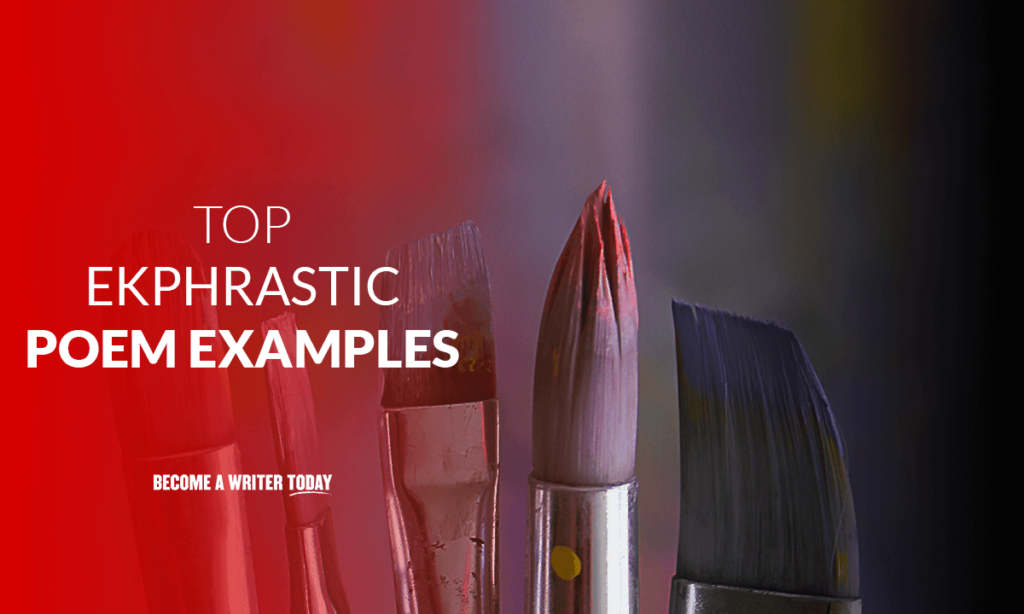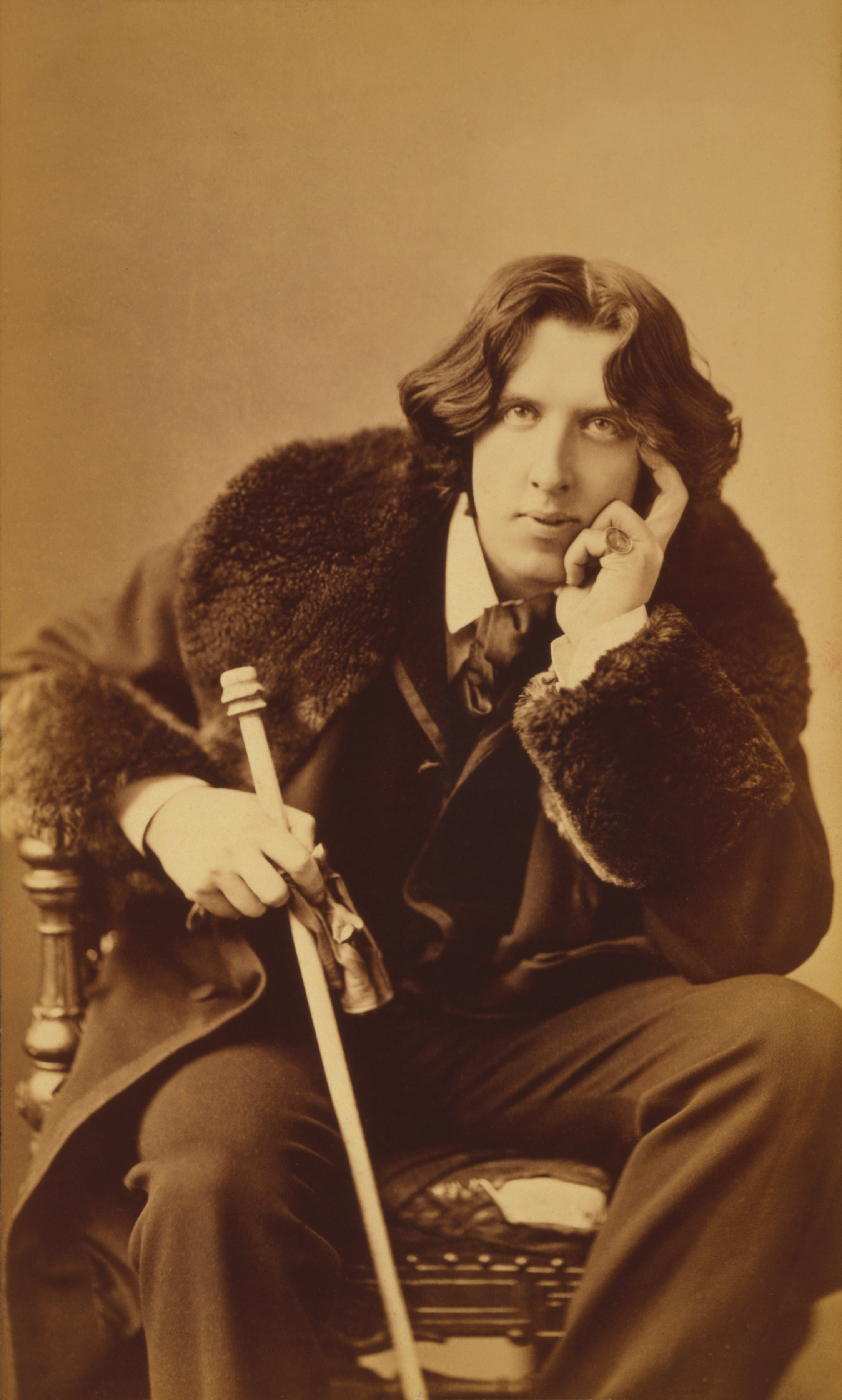Ekphrasis is a powerful literary tool, and there are numerous ekphrastic poem examples. Learn more about what makes ekphrastic poetry such a beautiful work of art.
Ekphrastic poetry is a term used to refer to poems that focus on works of art; however, the term has since expanded to include literary works that paint powerful, vivid images in the mind. It has been used by ancient Greek writers, American writers, English writers, and numerous other literary professionals in between. Ekphrastic writing is a vital part of creative writing and has made an impact from ancient times until the twentieth century.
For further reading, check out our article on the different types of poetry.
Learn more about the visual art of ekphrasis, and a look at some of the top examples of ekphrasis below.
Contents
- 1. The Iliad, by Homer
- 2. On the Medusa of Leonardo Da Vinci in the Florentine Gallery, by Percy Bysshe Shelley
- 3. Ode on a Grecian Urn, by John Keats
- 4. In the Musee des Beaux Arts, by WH Auden
- 5. The Picture of Dorian Gray, by Oscar Wilde
- 6. My Last Duchess, by Robert Browning
- 7. The Tall Figures of Giacometti, by May Swenson
- 8. The Starry Night, By Anne Sexton
- 9. Not My Best Side, by U.A. Fanthorpe
- 10. The Idiot, by Dostoveysky
- Poetry Resources

1. The Iliad, by Homer
The Iliad, by Homer, is widely viewed as one of the greatest literary works of all time. As one of the top masterpieces, it is also an example of ekphrasis. In the poem, the narrator describes the shield of Achilles in great detail. The description leaves no doubt in the reader’s mind about just how amazing the shield is. The epic poem has served as an enduring example of ekphrasis to future writers.
2. On the Medusa of Leonardo Da Vinci in the Florentine Gallery, by Percy Bysshe Shelley
On the Medusa of Leonardo Da Vinci in the Florentine Gallery, by Percy Bysshe Shelley, is another powerful example of an ekphrastic poem. The poem focuses on the speaker’s interaction with a renaissance piece of art. The speaker describes taking in all the terror and beauty of the work, gazing at death throughout the poem. The narrator creates powerful, vivid imagery for the reader, clearly showing how the artwork has impacted them.
3. Ode on a Grecian Urn, by John Keats
While ekphrastic poems usually describe the interaction between the narrator and a work of art, they also describe how a work of art has specifically impacted someone. That takes place in the poem by John Keats, “Ode on a Grecian Urn.” The narrator interacts with an ancient vessel, which grabs the narrator’s attention. The speaker asks several questions about what they are looking at, clearly demonstrating the impact of the work of art.
4. In the Musee des Beaux Arts, by WH Auden
In the Musee des Beaux Arts, by Auden, is one of the top examples of ekphrasis. The narrator attempts to create a work of art with his words, focusing on the painting, The Landscape with the Fall of Icarus, by Pieter Brueghel. In the painting, a man is falling from the sky, but the ship sails past as the man enters the water. It is an important statement on man’s place in the world and the fragility of life; however, the author leaves much of the painting up to the reader’s interpretation.
5. The Picture of Dorian Gray, by Oscar Wilde

Many people read The Picture of Dorian Gray during school; however, this work of art presents an entirely different take on the subject. Even though it starts positively, the picture begins to change over several months. Eventually, the positive picture begins to look cruel, and the ekphrasis changes as Dorian becomes more corrupt even though the man appears unchanged.
6. My Last Duchess, by Robert Browning

My Last Duchess is one of the most dramatic monologues by Robert Browning. The poem focuses on a portrait of his wife, which hangs on the wall. As the narrator talks, he reveals his own narcissism and describes how he was too protective of his beautiful wife. He even believes that he is partly responsible for the death of his wife. As the narrator continues to talk about his wife, his words give meaning to his actions and create a powerful feeling of discomfort when we reach the end of the poem.
7. The Tall Figures of Giacometti, by May Swenson
The Tall Figures of Giacometti, by May Swenson, directly responds to the beautiful works of a famous Swiss sculptor. In the poem, The sculptures themselves appear to be petrified saints, giving the reader a unique take on some of the most well-known sculptures of all time. The poem goes into vivid detail about each individual feature of the sculptures, clearly demonstrating the powerful impact they have on the narrator.
8. The Starry Night, By Anne Sexton
When people look at the title of this work, The Starry Night, they probably immediately think of the famous painting by Vincent van Gogh. That is the exact goal of the author, Anne Sexton. The poem also incorporates letters from Vincent van Gogh himself, describing how he goes and paints the stars whenever he feels sad. The emotions should shine through in this beautiful poem, which features a talented poet responding directly to the work of Van Gogh himself. An important example of ekphrasis, the reader gets some insight into the troubled soul of Van Gogh.
9. Not My Best Side, by U.A. Fanthorpe
In this work, Not My Best Side, the author is inspired by a painting by Paolo Uccello, titled St. George and the Dragon. In this unique poem, the subjects, which include the dragon and St. George, respond directly to the artist. Essentially, the subjects criticize the painter because he cannot capture the best side of the individual subjects. Even though this is a bit of a tongue-in-cheek poem, it is popular because it provides an escape from the traditional structures of the other works described above.
10. The Idiot, by Dostoveysky
In this work, the narrator describes the painting, The Idiot, in great detail. He focuses on the image of a poor, mangled body, describing a painting that actually horrified Dostoyevsky. The poem is a unique take on man’s suffering, describing the powerful painting in vivid detail for the reader. The work should leave a lasting impression on the reader, causing them to reflect on the mistreatment of humans by other people.
For something slightly different, why not check out some of these modern poetry books?
Poetry Resources
10 Sonnet Examples From Ancient Italy To Today
Top 10 Haiku Examples To Ponder
10 Ballad Examples Everyone Should Learn
Top 10 Limerick Examples To Make You Laugh
Free Verse Examples: 12 Top Poems To Consider